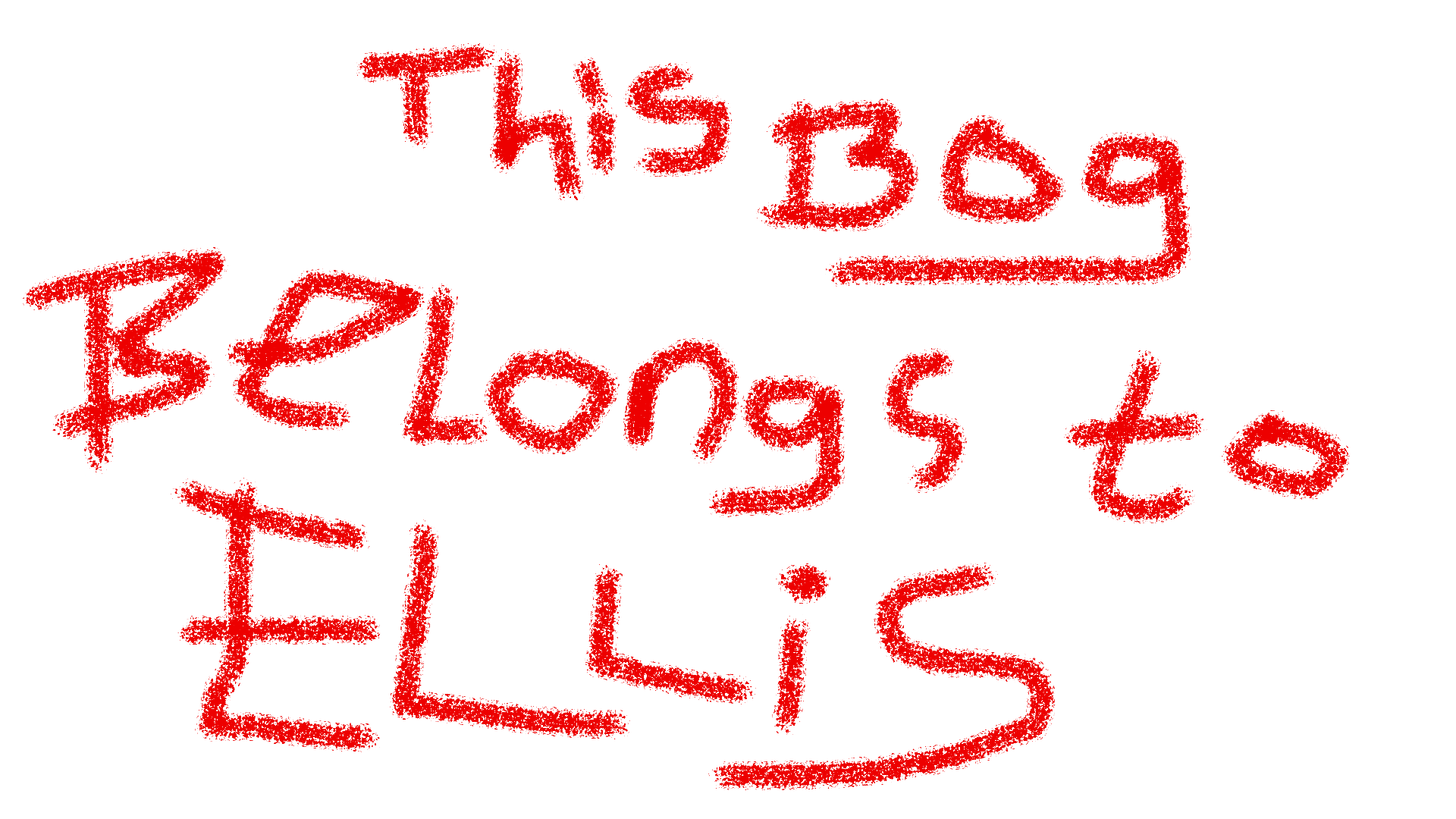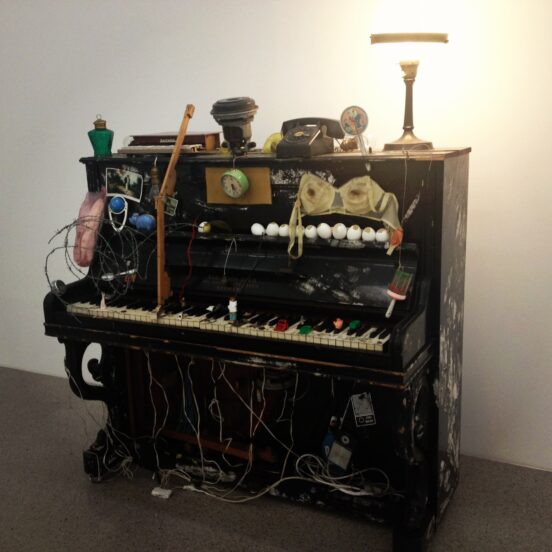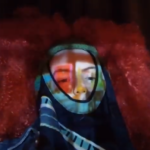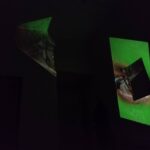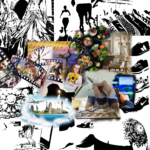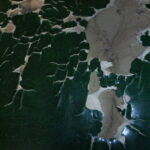I’ve been researching some artists who work with objects – fitting with the title of the current project – as well as sound: something I’d like to implement more in my practice.
John Cage’s work has changed, challenged and inspired the music world, as he has mixed ideas from Indian and Chinese philosophy, worked with modern dance troupes and used unconventional sources for sound in his musical scores. For his score Water Music, Cage used a unique notation to describe the steps in which the music was to be played. He was keen to assert that there was no correct way of interpreting what he had drawn, and encouraged those who were playing it to not seek out the exact items he had used, but use whatever they already had at their disposal.

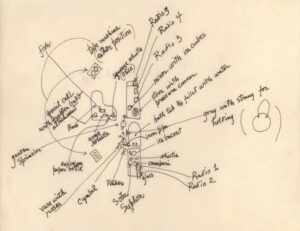
Chance and everyday noises are a key feature of Cage’s work; certain events must happen in a randomised order, and though some objects may be described, others may not. Unlike a finely tuned instrument, the noises these objects make is arguably more unpredictable, such as when the radio is turned to a randomly decided degree – will we hear music or just static? And the piano – an instrument usually associated with more classical, conventional composers – is altered by placing inanimate objects onto the strings (such as a fish), meaning when the keys are played, they won’t sound as expected.
Here he is performing Water Walk for TV. We can see a large assortment of everyday objects, ‘played’ at specific intervals and interacting with each other.
As mentioned in my previous post, in which I was experimenting with vinyl records, I’m very interested in the works of Nam June Paik. Relevant to this project’s title – Extraordinary Objects – this is his work entitled Prepared Piano. It is covered in an assortment of objects that not only affect the sound it produces, but how it is played: coiled barbed wire makes it rather hazardous; small toys and bit of wood are stuck to several keys; some keys are linked to other sound making devices, like bells, so you don’t only hear the sound of a piano. It not only produces sound, but some keys activate light switches too. Some of the objects Paik has chosen to use are rather grotesque, like a worn out bra and a row of cracked eggs. It seems like the kind of thing someone could find in an abandoned house after a hurricane.

For some reason or another, many other Fluxus artists were drawn to using pianos – John Cage used one in his Water Walk performance, they appear in several of Joseph Beuys’s works and Philip Corner’s ‘Piano Activities’ artfully destroyed a fair few of them. The piano seems to represent western musical ideas and tradition, and a strict method in which it was to be played to make ‘good’ music, a notion which this artistic movement challenged by manipulating these instruments, and appreciating the sounds made by objects not usually associated with music making.
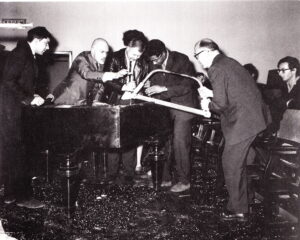
Paik also created Cellos out his favourite objects – TVs – which experimental cellist Charlotte Moorman would perform with (occasionally in the nude). Video could be shown through these chunky cathode ray devices, most often this would be a live video feed of the performer herself, as she was playing with it, which adds a strange new dimension to the viewing experience. Moorman often broke down the barrier of performer and audience, as can be seen in this video, by encouraging viewers to come forward and interact with the strings.

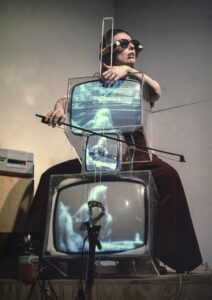
Recently I discovered this clever sound installation by the artist Laurie Anderson. This work particularly interested me as it’s a unique way of working with the concepts I have been learning about in my elective course, Architectural Acoustics and Spatial Sounds. The wooden table insulates and hides an audio device from those who observe it, but once the ends of your elbows meet the screw inside the little dips in the surface, your body becomes a speaker by transmitting a low frequency from the screw, through your arms to your skull. Looking at photos of this work being exhibited, it’s interesting to think about how the work could be viewed out of context. The participant must take on a position that looks reflective, maybe a little stressed and tired. When both ends of the table are being used, the participants could appear to be acting out a strained relationship, purposefully ignoring each other. ‘Remembering Sound’ is the subtitle of this work, and to someone who is participating in this work without understanding how this mysterious noise has reached their head without a speaker or headphones, this would seem like an odd experience, as though the table has artificially given them a memory of something they’ve never heard before. Hidden devices in furniture remind me of cold war spy gear, but this work has a much more peaceful nature, as the participants can use this device to listen to music and poetry through the table.
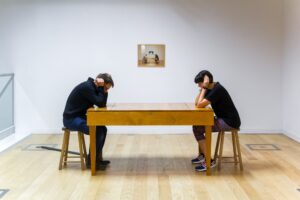

Sources
https://www.moma.org/explore/inside_out/2013/07/29/paper-planes-a-flight-through-fluxus-with-benjamin-patterson/
https://sound-art-text.com/post/29753771316/john-cage-water-music
https://www.theartstory.org/artist/anderson-laurie/
